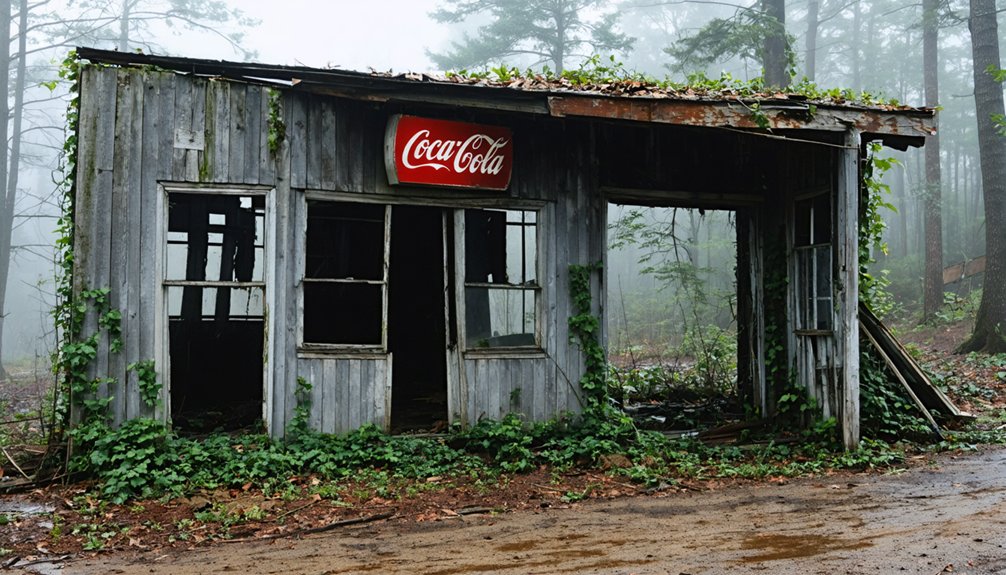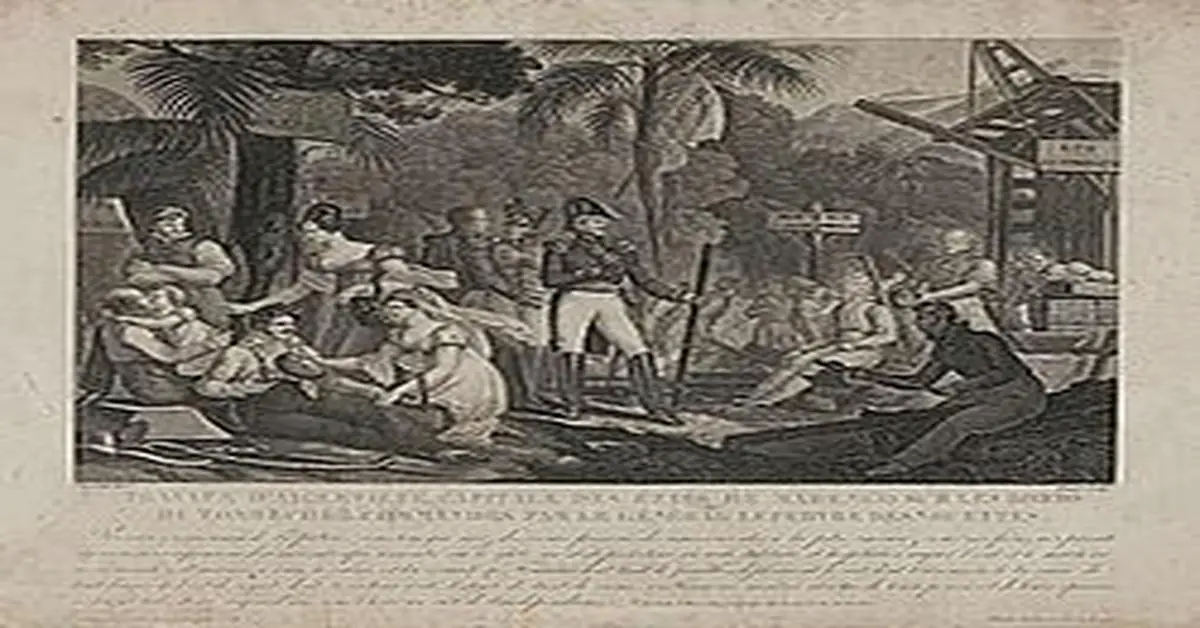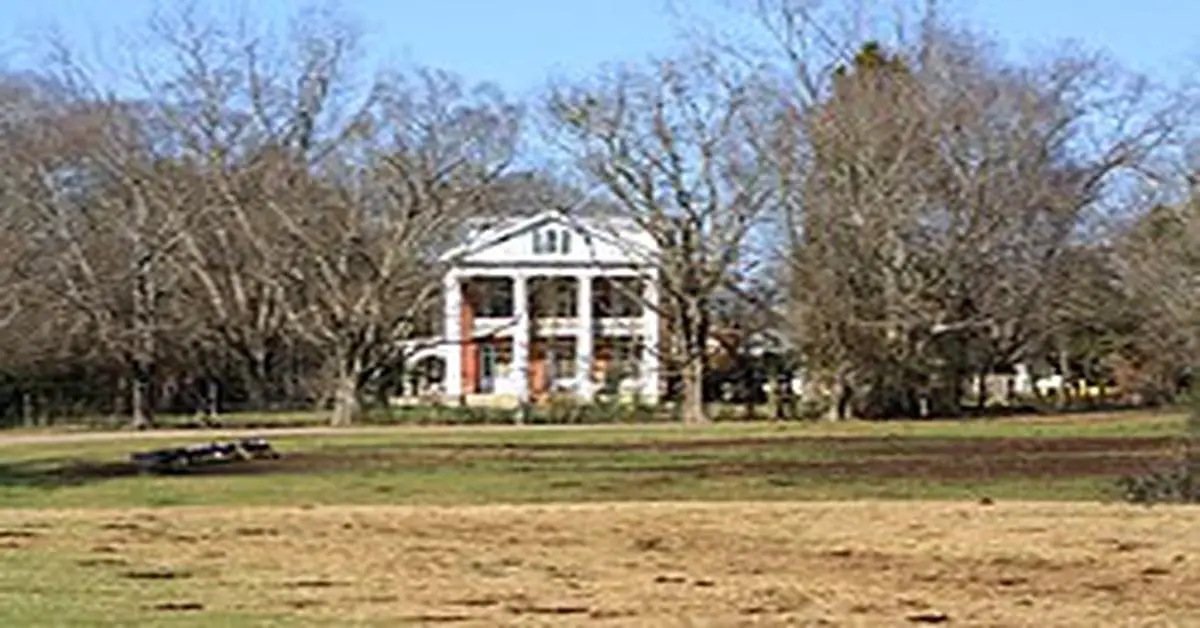You’ll find Montezuma’s ghost town remnants along the Conecuh River falls in Covington County, Alabama. Founded in 1823 as the county’s first seat, this once-thriving settlement featured 100-foot-wide streets, a courthouse, and bustling timber mills. Natural disasters, including catastrophic flooding and disease outbreaks, forced residents to abandon the town. Today, only a historical marker at GPS 31°20.636’N 86°31.491’W and scattered artifacts hint at the fascinating story beneath the surface.
Key Takeaways
- Montezuma was Covington County’s first county seat, established in 1821 but later abandoned due to recurring natural disasters.
- The town was strategically built along Conecuh River Falls with 100-foot-wide streets and a thriving business district.
- Catastrophic flooding in 1994 from Tropical Storm Alberto led to mass evacuations and the town’s eventual abandonment.
- Today, only a historical marker at GPS 31°20.636’N 86°31.491’W marks where this once-prosperous settlement stood.
- Archaeological evidence includes handmade bricks and mill remnants, though a 2003 investigation found no visible town remains.
The Birth of a Promising Settlement (1823-1824)
Seven enterprising men laid the foundation for Montezuma in 1823, purchasing two adjacent 80-acre parcels of federal land at $1.25 per acre.
Their settlement planning demonstrated remarkable foresight, with 100-foot-wide streets designed to accommodate future commerce and traffic flow.
The town’s strategic layout divided naturally along the Conecuh River. You’d find the business district on the east side, anchored by Main, Chestnut, Bluff, and Line Streets, while the west bank featured residential areas along Main, Spring, Ferry, Bay, Broad, Falls, and Pine Streets.
Community governance took shape quickly when the Alabama General Assembly designated Montezuma as Covington County’s first seat in 1824, complete with a courthouse and jail near the river falls. Under the leadership of John Devereux, the town established its earliest governing structures.
The town established its first post office in January 1826, marking a significant milestone in its development as a regional hub.
Life Along the Conecuh River Falls
The Conecuh River’s natural falls shaped every aspect of life in early Montezuma. You’d find bustling river commerce along the banks, where ferries like McDaniel’s transported goods and passengers downstream to Pensacola.
The settlement’s wide 100-foot streets accommodated wagon traffic, while the courthouse and Montezuma Academy established it as the county’s civic center. The mighty Horseshoe Timber Company dominated the local economy with its riverside mills.
Wide streets, a bustling courthouse, and prestigious academy marked Montezuma as the heart of county business and education.
Yet life by the falls brought significant challenges. You wouldn’t just face the constant noise of lumber mills – the river’s floodplain location exposed you to devastating floods and waterborne diseases like malaria and yellow fever. The Alabama General Assembly officially established the settlement on December 18, 1821.
These environmental hazards eventually forced residents to abandon the lowlands, moving to higher ground near Devereux Hill. Today, only street names and historical markers remind you of this once-promising settlement’s existence.
Natural Disasters and the Great Exodus
Multiple natural disasters struck Montezuma during its short-lived existence, but none proved more devastating than the catastrophic flooding of 1994. The flood impacts from Tropical Storm Alberto submerged the entire town, with over 21 inches of rainfall in just 24 hours destroying the community’s infrastructure. The rising floodwaters forced mass evacuations downtown, creating scenes of chaos as residents fled to safety. The Georgia National Guard mobilized over 3,600 Guardsmen to assist with emergency response and relief efforts.
The town’s declining community resilience was evident through:
- Widespread disease outbreaks including malaria and yellow fever
- Destructive fires that repeatedly damaged town properties
- Persistent flooding along the Conecuh River that threatened lives
- Environmental hardships forcing residents to seek higher ground
You can still see the flood scars in Montezuma’s landscape today, silent reminders of why settlers eventually abandoned the lowlands for Devereux Hill, where they established Andalusia in 1844.
Legacy of the Lost County Seat
Before fading into obscurity, Montezuma played a pivotal role as Covington County‘s first county seat, established through an 1821 Alabama General Assembly act that positioned the settlement strategically along the Conecuh River.
Today, you’ll find its cultural significance woven into the fabric of local identity, with the name “Montezuma” gracing everything from street signs to healthcare facilities.
Historical markers near River Falls commemorate the original site where John William Devereux, the “Father of Covington County,” established the area’s first post office in 1826. The settlement’s first courthouse, constructed of local logs, stood until its destruction by fire in 1839.
While the town itself succumbed to nature’s fury, its legacy lives on through the Montezuma Academy’s former grounds and local establishments that preserve the memory of this pioneering settlement in their names.
Modern-Day Traces and Historical Research
Modern investigations reveal stark contrasts between Montezuma’s historical significance and its physical remains today.
While the town once served as Covington County’s seat, you’ll find only scattered archaeological findings along the Conecuh River’s edge. The discovery of handmade bricks near the site suggests significant construction activity during the town’s heyday. The devastating Harrison Freshet flood of 1841 led to the town’s ultimate abandonment.
- A 2003 site investigation by Paul Spears and local historians confirmed no visible town remains exist on either riverbank.
- A historical marker at GPS 31°20.636’N 86°31.491’W stands as the primary physical reminder of Montezuma’s existence.
- Recent riverbed explorations have uncovered antique bottles and mill remnants, offering glimpses into past activity.
- Research by historians like Wyley Ward and G. Sidney Waits, despite courthouse fire losses, helps preserve Montezuma’s legacy.
You can visit the marker on Highway 84 near Heath Road, where green directional signs guide you to this monument of Alabama’s pioneer history.
Frequently Asked Questions
How Did the Town Get Its Unusual Name “Montezuma”?
You won’t find documented proof of Montezuma’s name origins, though it was likely chosen in 1824 to give the new settlement an exotic identity, possibly referencing the famous Aztec emperor Montezuma II.
What Happened to the Original Buildings and Structures After Abandonment?
You’ll find no preservation efforts saved Montezuma’s buildings – they deteriorated from abandonment effects like flooding, natural decay, and possible scavenging. The structures eventually vanished, leaving only historical markers behind.
Are There Any Artifacts From Montezuma in Museums Today?
Like a treasure chest that’s never been found, you won’t discover any confirmed artifacts from this site in museum exhibitions today. Research shows no major collections hold preserved items from there.
Did Any Families Continue Living in Montezuma After 1844?
No, you won’t find any family history of continuous residents after 1844. The population decline was complete – everyone left due to flooding, disease risks, and the county seat’s relocation to Andalusia.
What Native American Tribes Lived in the Area Before Montezuma?
You’d have found powerful Creek settlements dominating the area, with their vast confederacy controlling central Alabama. Cherokee presence was limited to northern regions, while Alabama and Koasati peoples maintained local villages.
References
- http://leepeacock2010.blogspot.com/2013/07/montezuma-historical-marker-describes.html
- https://www.andalusiastarnews.com/2025/02/21/column-remember-when-montezuma-revisited/
- https://digitalalabama.com/topic/alabama-ghost-stories/
- https://cityofandalusia.com/community/history-of-andalusia.html
- https://freepages.history.rootsweb.com/~gtusa/usa/al.htm
- https://www.waymarking.com/waymarks/WMBGCE_Montezuma_River_Falls_AL
- https://www.hmdb.org/m.asp?m=42549
- https://en.wikipedia.org/wiki/List_of_ghost_towns_in_Alabama
- https://algenweb.org/covington/Visitors.pdf
- https://www.alabamahistory.net/copy-of-coosa


